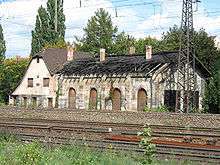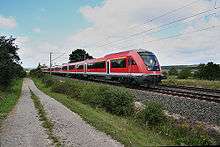Nuremberg–Würzburg railway
| Nuremberg–Würzburg railway | |||||||||||||||||||||||||||||||||||||||||||||||||||||||||||||||||||||||||||||||||||||||||||||||||||||||||||||||||||||||||||||||||||||||||||||||||||||||||||||||||||||||||||||||||||||||||||||||||||||||||||||||||||||||||||||||||||||||||||||||||||||||||||||||||||||||||||||||||||||||||||||||||||||||||||||||||||||||||||||||||||||||||||
|---|---|---|---|---|---|---|---|---|---|---|---|---|---|---|---|---|---|---|---|---|---|---|---|---|---|---|---|---|---|---|---|---|---|---|---|---|---|---|---|---|---|---|---|---|---|---|---|---|---|---|---|---|---|---|---|---|---|---|---|---|---|---|---|---|---|---|---|---|---|---|---|---|---|---|---|---|---|---|---|---|---|---|---|---|---|---|---|---|---|---|---|---|---|---|---|---|---|---|---|---|---|---|---|---|---|---|---|---|---|---|---|---|---|---|---|---|---|---|---|---|---|---|---|---|---|---|---|---|---|---|---|---|---|---|---|---|---|---|---|---|---|---|---|---|---|---|---|---|---|---|---|---|---|---|---|---|---|---|---|---|---|---|---|---|---|---|---|---|---|---|---|---|---|---|---|---|---|---|---|---|---|---|---|---|---|---|---|---|---|---|---|---|---|---|---|---|---|---|---|---|---|---|---|---|---|---|---|---|---|---|---|---|---|---|---|---|---|---|---|---|---|---|---|---|---|---|---|---|---|---|---|---|---|---|---|---|---|---|---|---|---|---|---|---|---|---|---|---|---|---|---|---|---|---|---|---|---|---|---|---|---|---|---|---|---|---|---|---|---|---|---|---|---|---|---|---|---|---|---|---|---|---|---|---|---|---|---|---|---|---|---|---|---|---|---|---|---|---|---|---|---|---|---|---|---|---|---|---|---|---|---|---|---|---|---|---|---|---|---|---|---|---|---|---|---|---|---|---|---|---|---|
| Overview | |||||||||||||||||||||||||||||||||||||||||||||||||||||||||||||||||||||||||||||||||||||||||||||||||||||||||||||||||||||||||||||||||||||||||||||||||||||||||||||||||||||||||||||||||||||||||||||||||||||||||||||||||||||||||||||||||||||||||||||||||||||||||||||||||||||||||||||||||||||||||||||||||||||||||||||||||||||||||||||||||||||||||||
| Locale | Bavaria, Germany | ||||||||||||||||||||||||||||||||||||||||||||||||||||||||||||||||||||||||||||||||||||||||||||||||||||||||||||||||||||||||||||||||||||||||||||||||||||||||||||||||||||||||||||||||||||||||||||||||||||||||||||||||||||||||||||||||||||||||||||||||||||||||||||||||||||||||||||||||||||||||||||||||||||||||||||||||||||||||||||||||||||||||||
| Line number |
| ||||||||||||||||||||||||||||||||||||||||||||||||||||||||||||||||||||||||||||||||||||||||||||||||||||||||||||||||||||||||||||||||||||||||||||||||||||||||||||||||||||||||||||||||||||||||||||||||||||||||||||||||||||||||||||||||||||||||||||||||||||||||||||||||||||||||||||||||||||||||||||||||||||||||||||||||||||||||||||||||||||||||||
| Technical | |||||||||||||||||||||||||||||||||||||||||||||||||||||||||||||||||||||||||||||||||||||||||||||||||||||||||||||||||||||||||||||||||||||||||||||||||||||||||||||||||||||||||||||||||||||||||||||||||||||||||||||||||||||||||||||||||||||||||||||||||||||||||||||||||||||||||||||||||||||||||||||||||||||||||||||||||||||||||||||||||||||||||||
| Line length | 102.2 km (63.5 mi) | ||||||||||||||||||||||||||||||||||||||||||||||||||||||||||||||||||||||||||||||||||||||||||||||||||||||||||||||||||||||||||||||||||||||||||||||||||||||||||||||||||||||||||||||||||||||||||||||||||||||||||||||||||||||||||||||||||||||||||||||||||||||||||||||||||||||||||||||||||||||||||||||||||||||||||||||||||||||||||||||||||||||||||
| Number of tracks | 2 | ||||||||||||||||||||||||||||||||||||||||||||||||||||||||||||||||||||||||||||||||||||||||||||||||||||||||||||||||||||||||||||||||||||||||||||||||||||||||||||||||||||||||||||||||||||||||||||||||||||||||||||||||||||||||||||||||||||||||||||||||||||||||||||||||||||||||||||||||||||||||||||||||||||||||||||||||||||||||||||||||||||||||||
| Track gauge | 1,435 mm (4 ft 8 1⁄2 in) standard gauge | ||||||||||||||||||||||||||||||||||||||||||||||||||||||||||||||||||||||||||||||||||||||||||||||||||||||||||||||||||||||||||||||||||||||||||||||||||||||||||||||||||||||||||||||||||||||||||||||||||||||||||||||||||||||||||||||||||||||||||||||||||||||||||||||||||||||||||||||||||||||||||||||||||||||||||||||||||||||||||||||||||||||||||
| Electrification | 15 kV/16.7 Hz AC catenary | ||||||||||||||||||||||||||||||||||||||||||||||||||||||||||||||||||||||||||||||||||||||||||||||||||||||||||||||||||||||||||||||||||||||||||||||||||||||||||||||||||||||||||||||||||||||||||||||||||||||||||||||||||||||||||||||||||||||||||||||||||||||||||||||||||||||||||||||||||||||||||||||||||||||||||||||||||||||||||||||||||||||||||
| Route number | 805, 811, 891.1, 900 | ||||||||||||||||||||||||||||||||||||||||||||||||||||||||||||||||||||||||||||||||||||||||||||||||||||||||||||||||||||||||||||||||||||||||||||||||||||||||||||||||||||||||||||||||||||||||||||||||||||||||||||||||||||||||||||||||||||||||||||||||||||||||||||||||||||||||||||||||||||||||||||||||||||||||||||||||||||||||||||||||||||||||||
| |||||||||||||||||||||||||||||||||||||||||||||||||||||||||||||||||||||||||||||||||||||||||||||||||||||||||||||||||||||||||||||||||||||||||||||||||||||||||||||||||||||||||||||||||||||||||||||||||||||||||||||||||||||||||||||||||||||||||||||||||||||||||||||||||||||||||||||||||||||||||||||||||||||||||||||||||||||||||||||||||||||||||||
The Nuremberg–Würzburg Railway is a German trunk line railway in northern Bavaria, connecting the city of Nuremberg with Würzburg the two largest cities in Franconia and passing through Fürth, Neustadt an der Aisch and Kitzingen. In addition to hourly Regional-Express trains and numerous freight trains, it is served by Intercity-Express trains during the day at half-hourly intervals with some gaps.
History


The 86 km stretch from Fürth to Rottendorf near Würzburg was built in as a shortcut between the Ludwig South-North Railway in Nuremberg and Ludwig's Western Railway line in Wurzburg.
The first parts of the current line were short segments built as part of other railway lines. The 8.0 kilometre long section between Rottendorf and Würzburg was opened on 1 July 1854 as part of Ludwig's Western Railway. The 7.7 km long section between Nuremberg and Fürth, opened on 1 October 1862, included the partial relocation of the Nuremberg–Bamberg section of the Ludwig South-North line. On 1 July 1864, the new station in Wurzburg was opened and the old Ludwig station was closed. The section between Fürth and Rottendorf was finally completed on 19 June 1865. At the same time the eight km section between Rottendorf and Würzburg was duplicated. In the summer of 1985 a third track was added to this section.
Development
The line is double track throughout. The section between Nürnberg and Fürth was electrified on 15 May 1939 and Fürth to Wurzburg was electrified on 3 October 1954. The 19th century line had a minimum railway curve radius of 2,000 Bavarian feet (about 600 m) causing numerous speed limits of 100 km/h.[2]
The first Federal Transport Infrastructure Plan (1973) identified the line from Würzburg to Nuremberg and continuing to Augsburg as one of eight railway development projects.[3] The same route was included in the 1977 coordinated investment program for federal transport in 1977, the Ausbaustrecke Würzburg to Augsburg included as one of six development projects.[4] The Würzburg-Nürnberg-Augsburg line was listed in the 1985 Federal Transport Infrastructure Plan as an absolute priority.[5]
Three track section
A third track between Würzburg and Rottendorf was put into operation in July 1985. The section between Würzburg and Rottendorf was congested in the early 1980s.[6] While the line had a nominal capacity of 240 trains per day (both ways) on weekdays 290 travel and freight trains operated. During peak hours many freight trains had to be diverted or kept in sidings. In order for the line to deal with the expected increase in traffic as a result of the planned Hanover–Würzburg high-speed line, plans were developed in 1976 for a third track on the 8 km-long section.
High-speed section
Work between 1992 started and 1999 increased speeds on the section between Neustadt and Iphofen by 40 to 60 km/h are to 200 km/h. These improvements were achieved by improvements to curves and the replacement of level crossings with bridges. At the same time speeds were increased at the entrance and exit at Würzburg station. These improvements led to a reduction of long-distance travel times of about seven minutes. Other smaller improvements were made elsewhere on the line.[2]
Planned new alignment
In a new line is now planned between Iphofen and Rottendorf. The approximately 25 kilometre long section would leave the old line to the west of Iphofen, run to the south of Kitzingen and rejoin the existing line west of Rottendorf station. Trains would be able to operate on the new line at up to 250 km/h reducing the current running time of 20 minutes to 13 minutes.
Services

Long-distance
Long-distance Intercity-Express line 25 (Munich–Hamburg) operates every two hours and line 41 (Munich–Ruhr) operates hourly on the line. In December 2007 Frankfurt–Vienna services were greatly expanded with ICE-T services every two hours between Frankfurt (some from Dortmund) to Vienna and vice versa. On Saturdays, the InterCity Rottaler Land pair of trains also operates from Hamburg to Berchtesgaden and Mühldorf; unlike other long-distance trains, it stops in Neustadt.
Regional and local transport
The Regional-Express Main-Franken-Bahn runs between Nuremberg and Würzburg every hour. Hourly Regionalbahn services run between Neustadt and Nuremberg.
Future
Extra tracks between Nuremberg and Fürth
A groundbreaking ceremony was held on 10 August 2006 for the building of two extra tracks between Nuremberg and Fürth to provide four tracks. This is a €162 million project related to the Nuremberg–Erfurt high-speed line project and the extension of the Nuremberg S-Bahn to Forchheim.[7] While the bulk of passenger traffic will continue to be carried on two tracks, a new track is necessary for freight traffic in order to create capacity for the S-Bahn. Four tracking of the line is due to be completed in late 2011.[8]
Neustadt (Aisch) Mitte station
A new station is being built between Emskirchen and Neustadt (Aisch) as Neustadt (Aisch) Mitte (“central”) station. This has been sought for years by the local population because of the unfavourable location of the Neustadt (Aisch) station on the town’s western outskirts.[9][10]
References
| Wikimedia Commons has media related to Nuremberg–Würzburg railway. |
- ↑ Eisenbahnatlas Deutschland (German railway atlas). Schweers + Wall. 2009. ISBN 978-3-89494-139-0.
- 1 2 Lorenzen, Carsten; Lindenberger, Bernhard (1999). "Ausbaustrecke Würzburg–Iphofen–Nürnberg (Würzburg–Iphofen–Nürnberg high-speed line)". Eisenbahntechnische Rundschau (in German) (48): 821 ff.
- ↑ Block, Rüdiger (1991). "Auf neuen Wegen. Die Neubaustrecken der Deutschen Bundesbahn (The new lines of the German Federal Railways)". Eisenbahn-Kurier (in German) (21): 30–35.
- ↑ Linkerhägner, Wilhelm (1977). "Neu- und Ausbaustrecken der Deutschen Bundesbahn (New and upgraded lines of the German Federal Railways)". Jahrbuch des Eisenbahnwesens (Railway system yearbook) (in German). pp. 78–85.
- ↑ Block, Rüdiger (1991). "ICE-Rennbahn: Die Neubaustrecken (ICE racetrack: the new lines)". Eisenbahn-Kurier (in German) (21): 36–45.
- ↑ Ellwanger, Guntherlast (1987). "Neubaustrecken und Schnellverkehr der Deutschen Bundesbahn. Chronologie (New DB lines and express trains. Chronology)". In Reimers, Knut; Linkerhägner, Wilhelm. Wege in die Zukunft. Neubau- und Ausbaustrecken der DB. (Pathways to the future. New and upgraded lines of the DB) (in German). Darmstadt: Hestra Verlag. pp. 245–250. ISBN 3-7771-0200-8.
- ↑ "Bahn-Schwerpunkt Nürnberg: DB investiert rund eine Milliarde Euro in neue Gleise und Anlagen] (DB invests around one billion euros in new track and equipment)" (Press release) (in German). Deutsche Bahn. 1 February 2008.
- ↑ "Umsetzung von Projekten des Neubaus, Ausbaus und der Erhaltung der Bundesschienenwege in Bayern (Implementation of projects of the construction, expansion and maintenance of federal railway in Bavaria)" (PDF). Federal government's response to the written question by Anton Hofreiter, Bettina Herlitzius, Winfried Hermann and other Members and the Group of Alliance 90/The Greens) (in German). Deutscher Bundestag. 27 January 2009.
- ↑ "Bau des neuen Haltepunktes Neustadt (Aisch) Mitte endgültig beschlossen (Construction of new Neustadt (Aisch) Mitte halt finally decided)" (PDF) (Press release) (in German). Bayerische Eisenbahngesellschaft mbH:. 24 August 2007. Retrieved 26 March 2010.
- ↑ "Wende nach 55 Jahren (Reversal after 55 years)" (in German). Nürnberger Zeitung. 6 September 2007. Retrieved 26 March 2010.